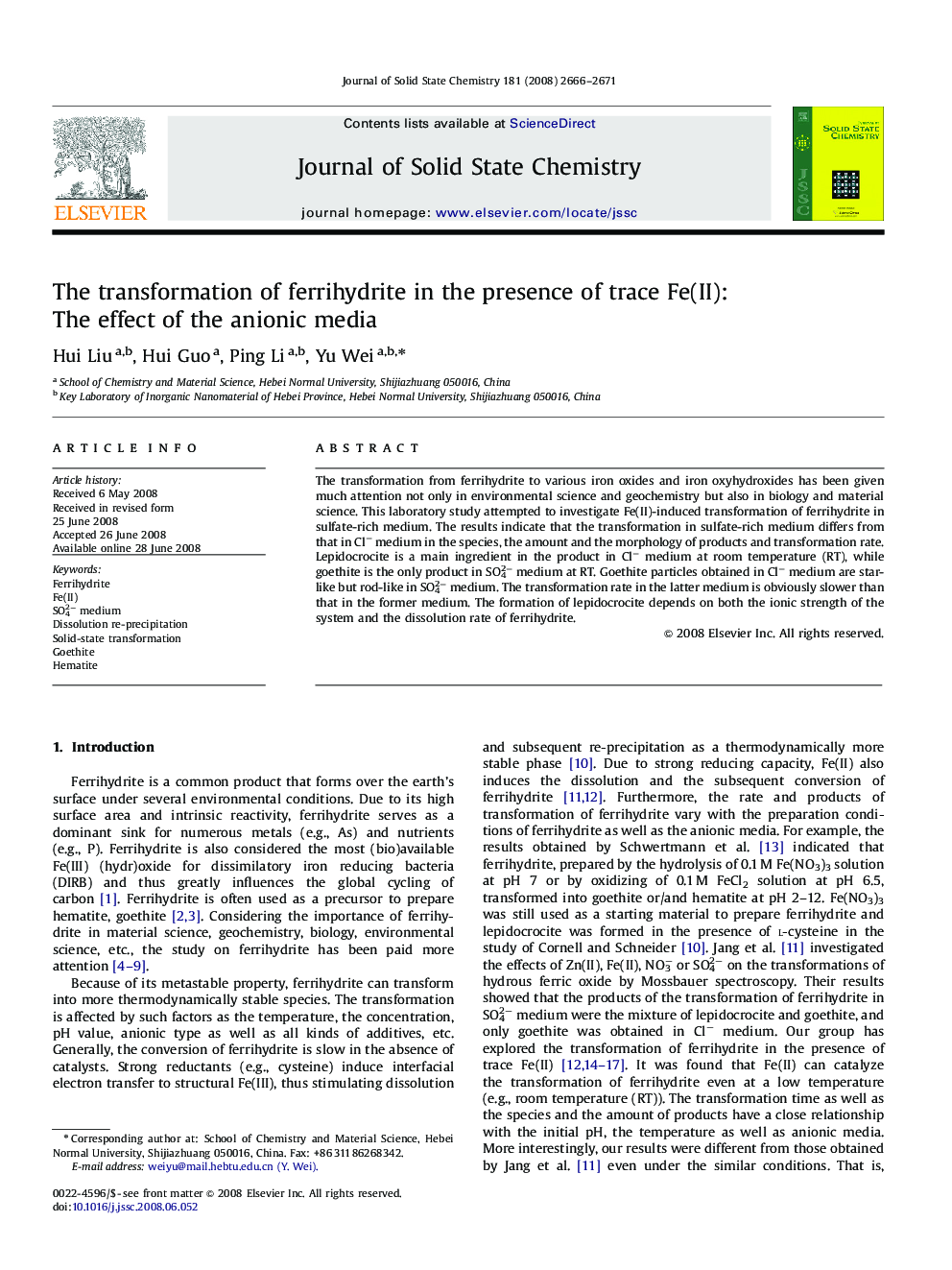| Article ID | Journal | Published Year | Pages | File Type |
|---|---|---|---|---|
| 1332015 | Journal of Solid State Chemistry | 2008 | 6 Pages |
The transformation from ferrihydrite to various iron oxides and iron oxyhydroxides has been given much attention not only in environmental science and geochemistry but also in biology and material science. This laboratory study attempted to investigate Fe(II)-induced transformation of ferrihydrite in sulfate-rich medium. The results indicate that the transformation in sulfate-rich medium differs from that in Cl− medium in the species, the amount and the morphology of products and transformation rate. Lepidocrocite is a main ingredient in the product in Cl− medium at room temperature (RT), while goethite is the only product in SO42− medium at RT. Goethite particles obtained in Cl− medium are star-like but rod-like in SO42− medium. The transformation rate in the latter medium is obviously slower than that in the former medium. The formation of lepidocrocite depends on both the ionic strength of the system and the dissolution rate of ferrihydrite.
Graphical abstractFe(II)-induced transformation of ferrihydrite in sulfate-rich medium was studied. Lepidocrocite is a main ingredient in the product in Cl− medium at room temperature (RT), while goethite is the only product in SO42− medium. Goethite particles obtained in Cl− medium are star-like but rod-like in SO42− medium.Figure optionsDownload full-size imageDownload as PowerPoint slide
